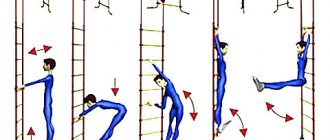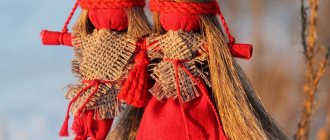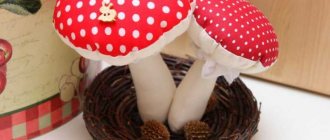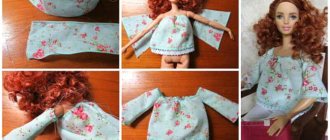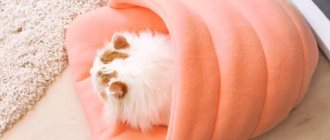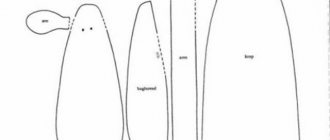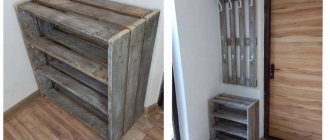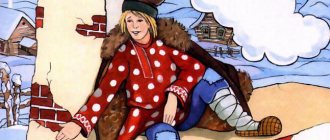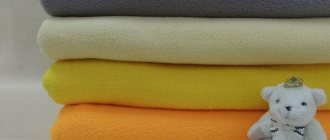Sewing children's pajamas is one of those jobs that beginner craftswomen can safely take on. The difficulty level is quite easy, the fabric consumption is less than for clothes for an adult. In addition, if small errors are made during work, then this is not a problem, because pajamas are intended only for home use, and even at night.
This is the kind of children's pajamas we will sew today
If you have a desire to sew something necessary and useful for a child, then this article is for you. Just below you can download PDF patterns for children's pajamas for ages 9, 10, 11 and 12 years. There are also options for children from 1 to 14 years old - these are patterns from Marlene Mukai.
Master class Children's pajamas: blouse and pants
I have long wanted to sew pajamas for my daughters myself, and the other day it happened. For pajamas in the summer, a sweatshirt is suitable, for the winter and mid-season, interlock, and warmer fabrics are also suitable for the winter, for example: fleece footer. I have interlock, soft and delicate knitwear. The fabric was provided by the online store martapillow.ru.
Free pajama pattern from the website mamashilamalishu.ru (size 68-152 cm). The pattern is suitable for both girls and boys. My daughter is 103 cm tall, I took the blouse (sweatshirt) pattern for a height of 104 cm (the size fits perfectly, there is even a small reserve), but for the panties pattern it is better to take a size larger, since this one turned out to be close to us.
So let's start with the pajama top. Cut out all the pattern pieces + 0.8 cm for the seams: front, back, 2 sleeve pieces in a mirror image. It is better to sew cuffs and neck from ribbed or cash-corse. Don't forget to transfer the marks from the pattern to the fabric.
Lay out the details of the front, back and sleeves as shown in the photo below.
Sew the sleeves to the back and front, aligning the marks. A total of 4 seams need to be made. Iron the seams. I sew pajamas using an overlocker, but you can also use an overlock stitch on a sewing machine using knitwear needles. If in this case the knitwear stretches a lot, then you can put paper under the foot of the sewing machine and stitch along it.
Then we place the front and back with the right sides on top of each other, straightening the sleeves and sewing the sleeves and the front with the back, where marked with a dotted line, making only 2 seams.
Let's move on to the cuffs. We bend the parts and sew them into a ring, where it is marked with dotted lines.
We bend the cuff parts in a circle so that the seams remain inside.
Sew the cuffs into the sleeves, aligning the marks. At the same time, stretch the cuff a little so that it coincides with the neckline of the sleeve.
Let's move on to the neck. We bend the strip in half and sew it where it is marked with a dotted line.
We bend it in a circle in the same way so that the seam remains inside.
Divide the neck of the blouse into 4 equal parts and make marks on it. We combine the facing so that the marks on it and the blouse match. The neckline facing is slightly smaller than the neckline on the blouse, so the facing needs to be stretched a little when we sew it on.
Iron the neckline, giving it a finished look.
If you want to close the seam on the back of the neck, you can proceed as follows: measure the distance between the seams at the back of the neck, add a couple of centimeters to the hem and cut a strip 3 cm wide. In my case, the size of the strip was 14x3 cm.
Sew one edge to the seam, folding the edges, as shown in the photo below.
We bend the second edge and sew it below.
Ironing. This creates a neat seam on the back.
We decorate the bottom cut of the blouse. If you don’t have a cover stitching machine, then first process the edge using an overlocker.
Then we bend the edge by 2-3 cm and sew a straight line on a sewing machine. If you have a cover stitching machine, this will make the task much easier. Iron all seams. Such clips for fixing fabric can be purchased here.
The blouse with raglan sleeves is ready.
Let's move on to the pants. I changed the pattern of the trousers a little by connecting the front and back so that there was no seam on the side. We cut out all the details of the pattern + 0.8-1 cm for the seams: 2 parts of the legs in a mirror image, 2 parts of the cuffs and a strip for the belt. It is better to sew cuffs and a belt from ribana or cash-corse.
We place both parts of the legs with their right sides on top of each other and sew the central seams where marked with a dotted line.
We place the front and back of the legs with their right sides facing each other and sew a crotch seam where marked with a dotted line.
We also sew the cuffs of the trousers into a ring and bend them in a circle so that the seams remain inside.
We sew the cuffs into the pants.
All that remains is to sew on the belt. We bend the strip for the belt in half and stitch it where it is marked with a dotted line.
We bend it in a circle so that the seam remains inside.
At this stage, you need to insert the elastic into the waistband (between the layers of fabric). The length of the elastic is usually 1-2 cm less than the circumference of the tummy, but this depends on the ductility of the elastic itself. We sew the belt to the pants, connecting the marks.
To prevent the elastic from turning over during washing, it can be sewn to the belt itself from the back, where it is marked with a dotted line.
Children's pajamas are ready.
Katerina is 4 years old.
I used the same pattern to sew pajamas for my eldest daughter. Veronica is 7 years old. I ordered Ladoshka interlock knitwear from the “1 meter of fabric” store.
And these pajamas are for my youngest daughter (made from double-thread fleece and kulirka). Katerina is 5 years old.
Another pajamas for my eldest daughter from the cooler. Veronica is 10 years old, height 146 cm.
See also: - Dress with a frill based on a sweatshirt pattern - Top/tunic for girls - Sweatshirt with a voluminous collar - Jumpsuit/fleece undershirt - Children's pants - Breeches for girls
How to choose the color of children's pajamas?
There is no shortage of fabrics on store shelves today. However, remember that pajama design needs to be taken seriously. For example, many mothers want to sew pajamas for their son in the shape of a superhero costume.
However, it will be extremely difficult to put your baby to bed in such pajamas, because children get carried away so easily. And then try to convince him that you dressed him as Spider-Man so that he would go to bed and not go off to perform heroic deeds.
This wardrobe item with bright pictures will produce approximately the same effect. The baby will want to show his brother, sister, grandmother, aunt, uncle in it, but just going to bed in it is so boring.
It is better to give preference to fabric with dim pictures or even one color. This point is especially important for children who suffer from sleep disorders.
Summer/lounge suit
As a rule, summer and home suits or burda overalls differ in design from each other in the size of the product. As a rule, the first one is more adjacent to the body, and the second one is made more spacious. This fact should be taken into account when creating a fashionable life-size pattern. A diagram of one and the second contact product is presented below. As for tailoring, one and the other suit must have an elastic band or a special fastener.
As a rule, elastic bands for small children under 7 years old are more preferable for convenience and outdoor games. It’s definitely worth setting aside a few centimeters for darts, embedding elastic and other details. Otherwise, you will need to alter the model.
What you need
One of the most important points is the choice of fabric for sewing children's pajamas. The main requirements that sleep and rest kits must meet are comfort and safety. Therefore, when buying material for work, you first need to pay attention to its composition. The priority is 100% natural fabrics in which the child’s skin will breathe freely. The ability of matter to absorb moisture well and retain heat is also important. And, of course, ease of care: children's pajamas should be easy to wash, both by hand and in a washing machine, dry quickly and iron at normal temperatures.
It is better to make children's pajamas for autumn-winter from flannel, thick knitwear or terry cloth. Flannel sleepsuits are soft and cozy to the touch, retain heat well and keep you warm in cold weather. They can also last for more than one season: flannel is highly durable and wear-resistant, does not stretch after washing and does not lose shape when worn. Knitted pajamas allow air to pass through well, practically do not wrinkle and do not require special, delicate care. And terry is generally considered one of the warmest fabrics, which also absorbs moisture well and creates a feeling of comfort and coziness.
To ensure that your baby really likes the finished pajamas, it is advisable to buy fabric in his favorite color, or even better, with images of funny animals or cartoon characters.
The best option for hot summer nights is cotton pajamas. Calico children's sets are very popular. This is a soft, easy to sew and inexpensive fabric with high hygroscopicity and a huge selection of bright colors. In cotton pajamas, a child will never sweat even in a stuffy room, which means that the baby’s sleep will be deep and healthy.
Don't forget about the appearance of the material. To ensure that your baby really likes the finished pajamas, it is advisable to buy fabric in his favorite color, or even better, with images of funny animals or cartoon characters.
You need to be especially careful when choosing home clothes for a child with allergies. Here you will need not just absolutely natural fabric, but also without bright patterns throughout the entire fabric to avoid contact of children's skin with dyes
A safe option is a material with a printed pattern, which is applied only to the outside of the fabric.
In addition, for work you will need a standard set of sewing supplies: a measuring tape, scissors, a needle and pins, a chalk or a piece of soap, matching threads, an elastic band and a sewing machine.
This is interesting: Pattern Baby pillow Whale
Shirt base for children 4 and 8 years old
Patterning a shirt for a child of any age will be difficult for a beginning craftswoman, since it is necessary to provide for the presence of many details and to correctly place the calculated measurements on the drawing. In this case, the best option would be to cut out an old shirt and add a couple of centimeters on all sides, based on the size of the boy.
It is definitely worth considering the allowance for buttons and holes for them. If the shirt will have a zipper, this is also worth thinking about. Take into account the required couple of centimeters on both sides. You need to start making the pattern from the front, and then finish with the back, sleeves and neck.
Note! Many needlewomen recommend that novice craftswomen do not make intricate designs when making such items as girls’ clothing patterns, but try to practice making classic children’s patterns.
Shape selection
There are a lot of models of children's pajamas. For example, for girls 4-7 years old, a home suit of trousers or breeches and a sweatshirt or T-shirt is suitable - it all depends on the type of fabric and time of year. And for boys 3-5 years old, shorts or pants and a T-shirt with long or short sleeves are usually sewn. For 2-year-old children, it is better to choose sleep suits with buttons or rivets in order to quickly and easily change the baby’s clothes at night if necessary. And babies under the age of 1 year are more comfortable sleeping in warm and cozy “little men” (slips), which are relevant at any time of the year.
For children 3-5 years old, pants and a long-sleeved T-shirt are usually sewn, and for children 2 years old it is better to choose sleep suits with buttons.
When choosing a model, the mother needs to focus on the usual temperature in the nursery, consider whether the baby sleeps at night with the window open and whether he likes to cover himself with a blanket. And, of course, it is better to ask the opinion of a little fashionista or fashionista in advance, so that the child puts on pajamas with pleasure and goes to bed in a good mood.
Preparation of patterns
In any situation, an inexperienced needlewoman has the opportunity to use ready-made patterns. However, if you want to sew pajamas with a unique design, you should measure the chest circumference, neck circumference, and waist circumference.
Next, you should calculate the height of the armhole and collar for the sleeve. For the lower part, you will need to calculate the circumference of the hips and the length of the trouser leg. For long pajamas, you should first calculate the width of the calf muscle. All results obtained must be transferred to paper using a pencil and ruler.
Selection of materials for sewing
The next stage in independent work is the optimal selection of the textile base. In this case, first of all, a number of individual characteristics of the future owner are taken into account:
- Age.
- Presence of allergic reactions.
- Sensitivity of the skin.
Today there are three groups of fabric bases on sale: made from natural threads, synthetic and combined fabrics. Each presented option has a number of pros and cons as a practical choice.
Natural fabrics allow air to pass through perfectly, allowing the skin to breathe. In addition, they do not heat the skin, do not absorb unpleasant odors, and do not cause allergic reactions. However, despite the presence of a large number of advantages, such canvases are not without disadvantages.
Pajamas made exclusively from natural fibers quickly lose their shape, shrink, and lose their original color. Synthetic fibers are durable, resistant to frequent washing, and do not lose color. However, for children's pajamas this option is absolutely unacceptable due to frequent allergic reactions on delicate skin.
Artificial fabrics do not allow air to pass through well, can irritate the skin, and also quickly absorb sweat odors. For this reason, mixed types of textiles, in which natural and synthetic threads are in optimal proportions, are very popular today.
Selection of tools for work
You should begin independent cutting and sewing activities by organizing your workplace. Working with a needle and thread requires painstaking work and constant eye strain. In order to reduce the load on the muscles of the back, arms and shoulders, carefully select the height of the table and chair.
To relieve the eye muscles, you should prepare the optimal level of natural and artificial lighting. You will also need the following set:
- A set of patterns for preparing patterns.
- Sharp scissors that will not tear the edges of textiles.
- Tape measure.
- Pencil.
- Sewing machine.
- Decorative elements (if they are provided for this model).
- Threads and needles for hand stitches.
Step-by-step instructions for sewing pajamas with a detailed description of each stage of the work may also be useful (for example, how to sew silk pajamas with short shorts).
Taking measurements
Before constructing a pattern diagram, you need to carry out the procedure of taking measurements.
Note! It is not recommended to take your own measurements.
When modeling a pattern, the following parameters are taken into account:
- chest girth - OG, through protruding points parallel to the floor around the body;
- waist circumference - OT, measured at the narrowest part of the waist;
- hip circumference - OB, highlight the most protruding points on the buttocks and take measurements;
- chest height - VG, from the slope of the shoulder down to the most prominent point;
- back height - BC, from the beginning of the neck to the waist;
- shoulder length;
- shoulder circumference - OP, measured with the arm down;
- the length of the sleeve;
- shoulder width - ШП;
- length of the product.
Measurements are made using a centimeter tape. Rules:
- Take off on the right side of the body.
- First remove the girths, then the lengths.
- A man stands upright in light clothing.
- The waist is pre-girdled with a cord.
- The tape does not stretch or loosen.
- Build the diagram using half a figure.
- “C” is a half-girth sign.
- The length is written down in full, denoted by the letter “D”.
Taking measurements
